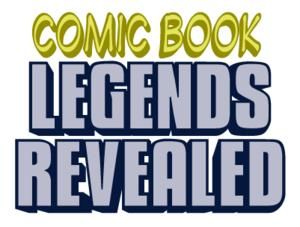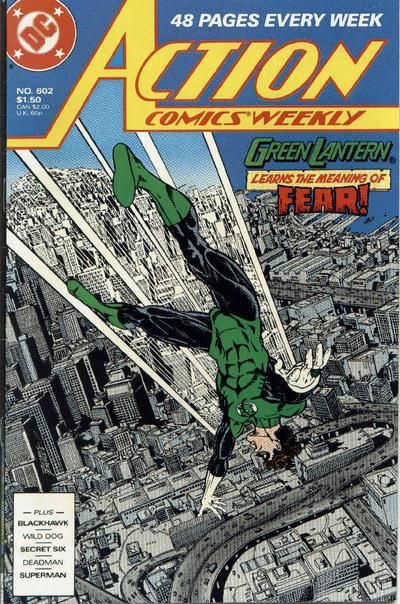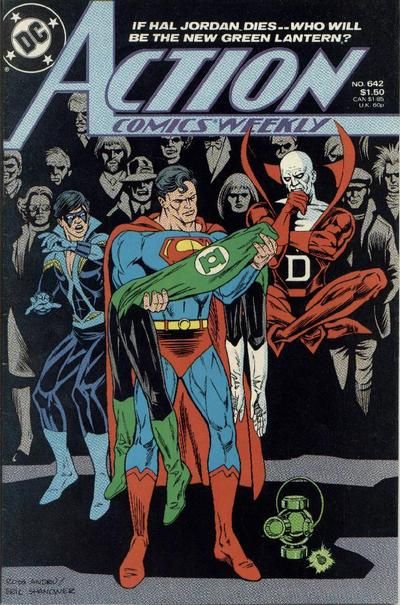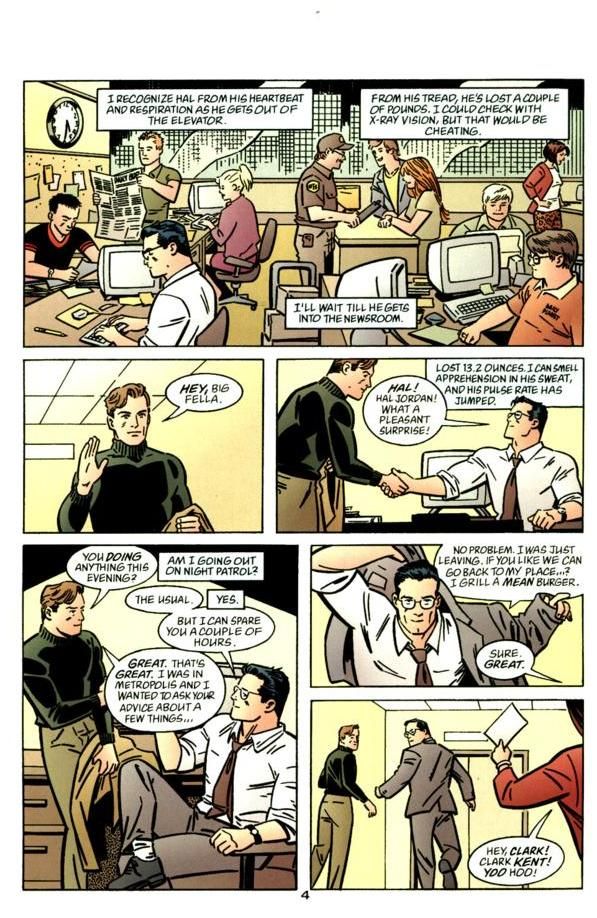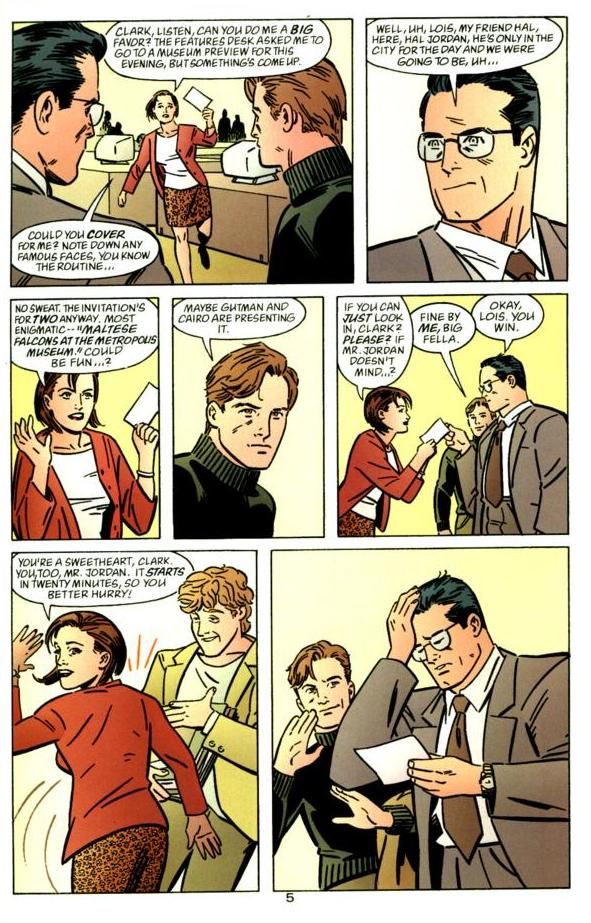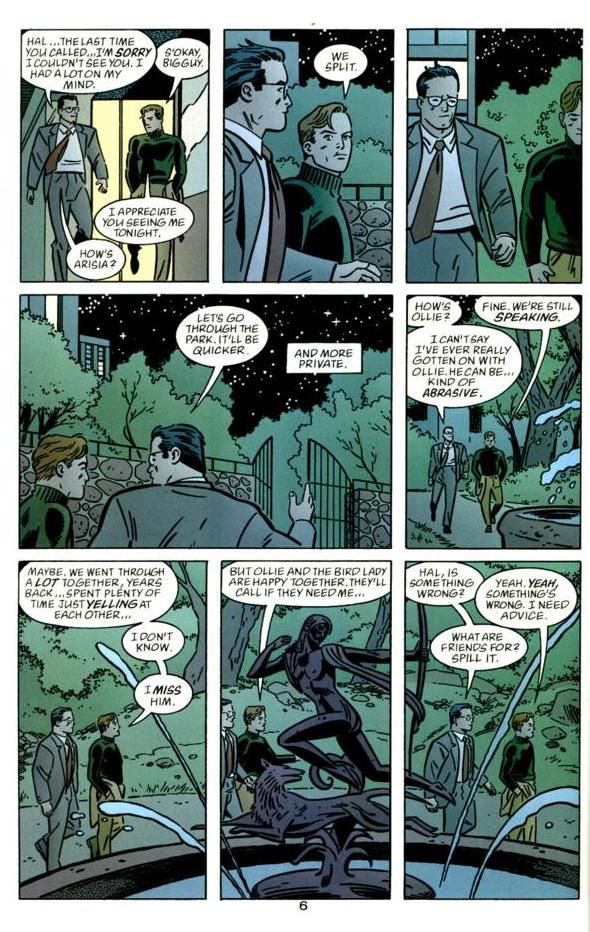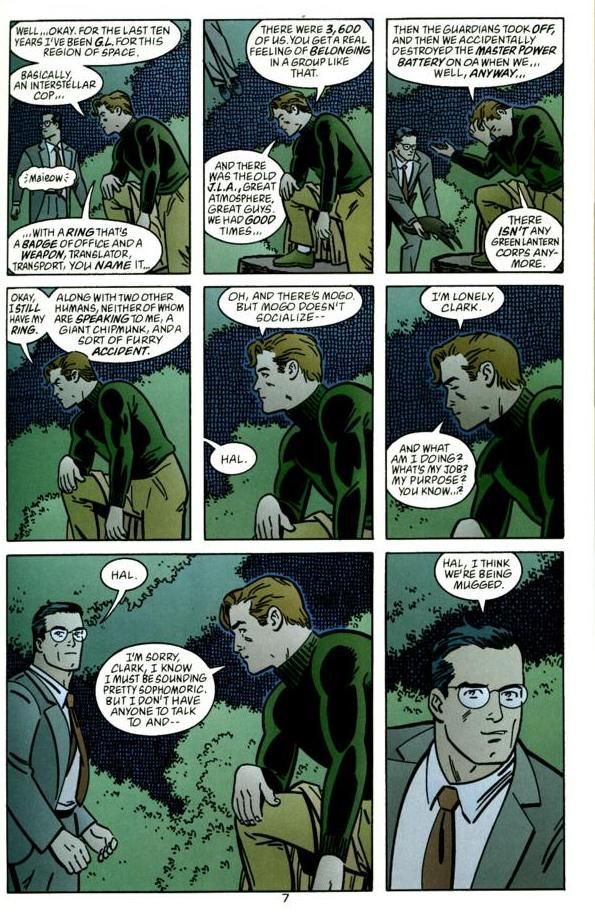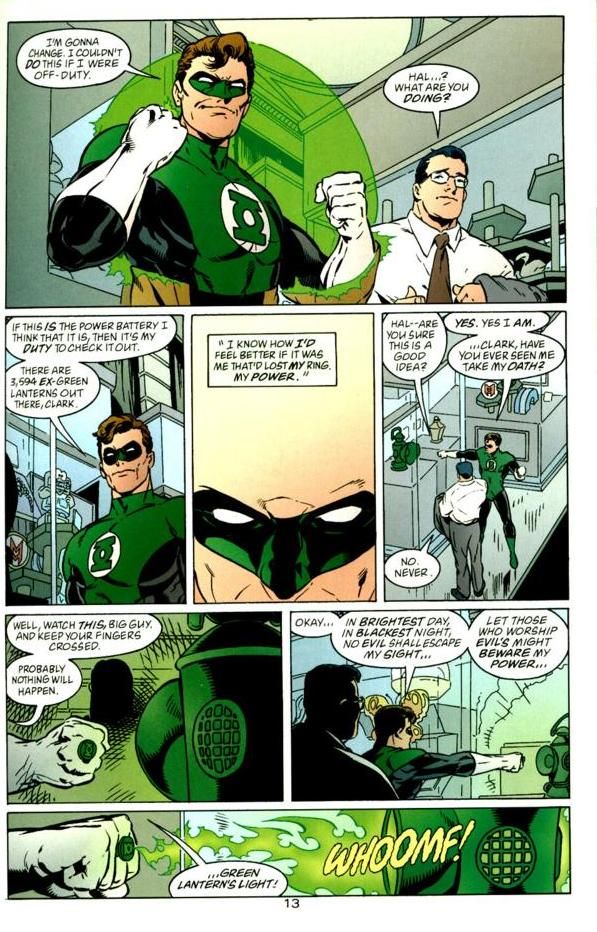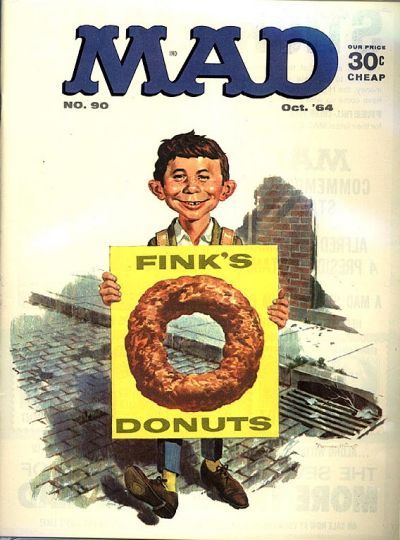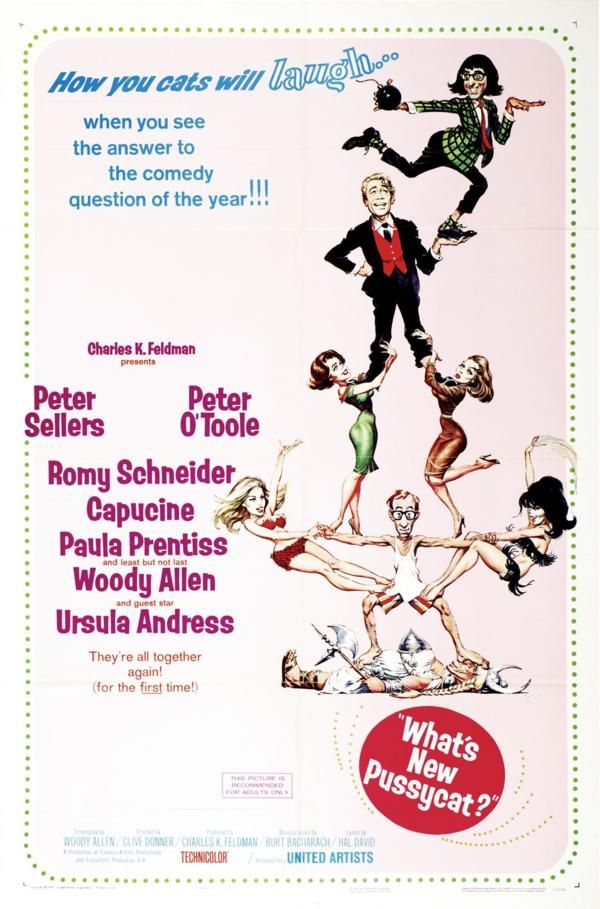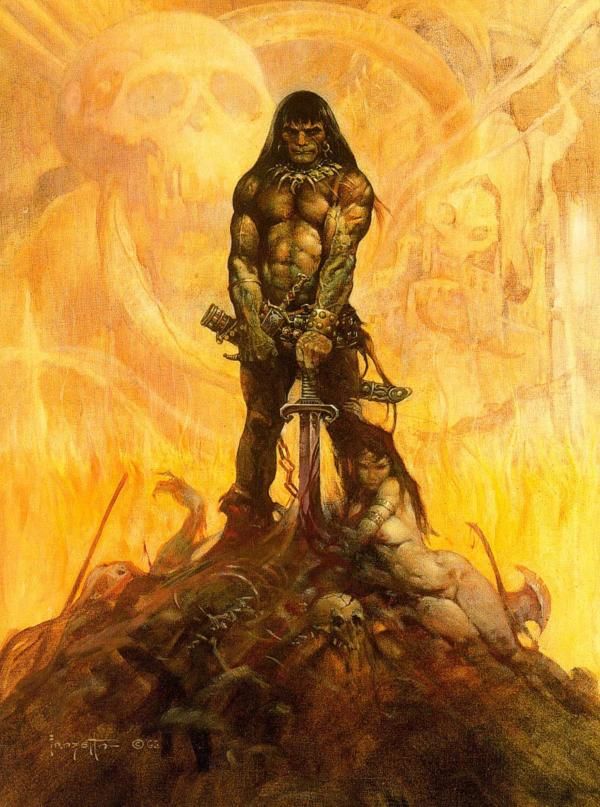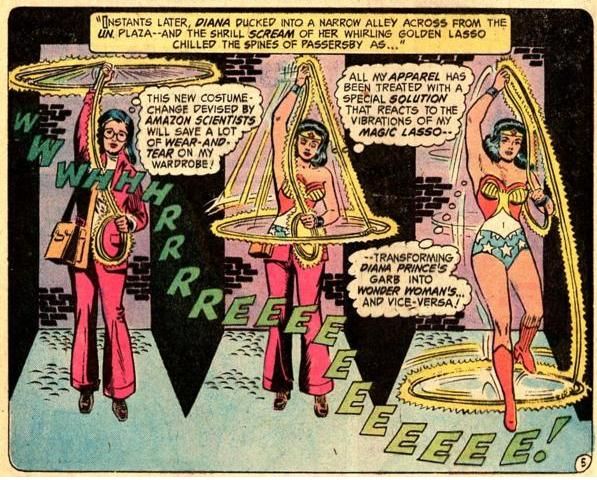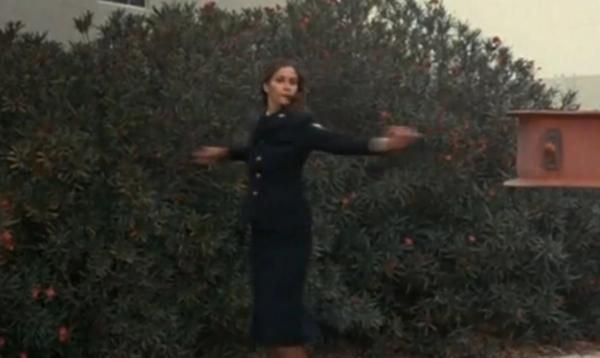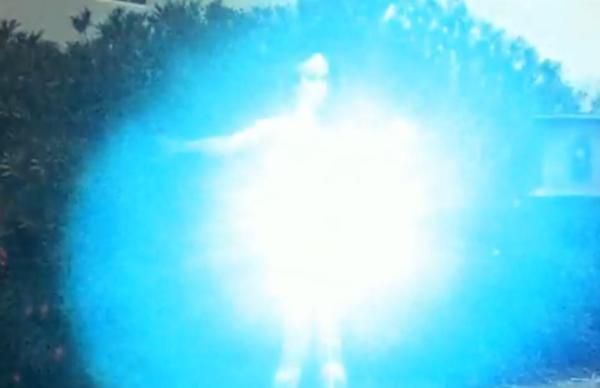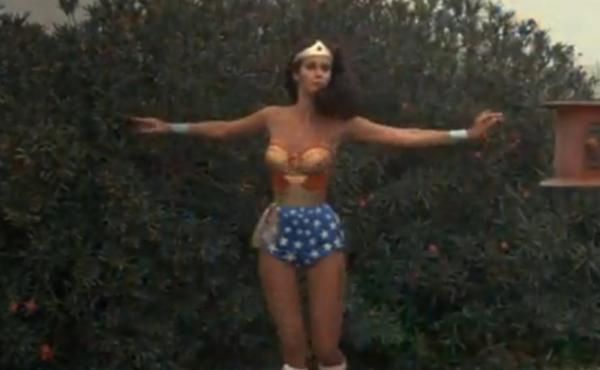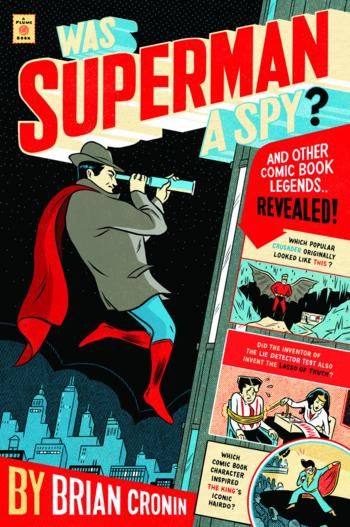Welcome to the two-hundred and eighty-eighth in a series of examinations of comic book legends and whether they are true or false. Click here for an archive of the previous two hundred and eighty-seven.
Comic Book Legends Revealed is part of the larger Legends Revealed series, where I look into legends about the worlds of entertainment and sports, which you can check out here, at legendsrevealed.com. I'd especially recommend you check out this installment of Vaudeville Legends Revealed to learn the strange story behind Jack Benny's name! Plus, what act of heroism was responsible for Will Rogers first gaining fame on the vaudeville circuit?
Follow Comics Should Be Good on Twitter and on Facebook (also, feel free to share Comic Book Legends Revealed on our Facebook page!). As I've promised, at 2,000 Twitter followers I'll do a BONUS edition of Comic Book Legends Revealed during the week we hit 2,000. So go follow us (here's the link to our Twitter page again)! Not only will you get updates when new blog posts show up on both Twitter and Facebook, but you'll get original content from me, as well!
Let's begin!
COMIC LEGEND: A Neil Gaiman Superman/Green Lantern project was halted at the script stage because of a conflict with recent Superman continuity.
STATUS: True
A few weeks back, in a Year of Cool Comics bit on Action Comics Annual #1, in reference to a point about how exactly how much work Art Adams has done for DC Comics over the years, a reader mentioned Adams' work on a Neil Gaiman Superman/Green Lantern story. A few readers asked about it, and now I figure I will discuss it, particularly why it did not get past the script stage until over a decade after it was written by Gaiman!!
You see, the main "star" of Action Comics Weekly was Green Lantern (specifically Hal Jordan), as he more or less anchored the book (DC even ended Green Lantern Corps to make room for Green Lantern to star in Action Comics Weekly).
Well, a little less than a year later, DC decided that they no longer liked the idea of having Action Comics be a weekly anthology, so they wanted to do one final issue where it would tie in all the disparate characters who appeared in the book (including characters like the Blackhawks whose adventures were set during World War II!).
Neil Gaiman was hired to do the story, and he wrote out a plot that (in my humble opinion) was quite good. Editor Mark Waid was really happy with it and DC was ready to go ahead with the story (Gaiman recommended Mark Buckingham, not yet a known quantity in the states, to be the artist on one of the chapters in the book).
However, there was a bit of a snag with the plot. You see, in Gaiman's story, he has Superman and Green Lantern know each other's secret identities. The problem was that in the current Superman continuity of the time, Superman did not know Green Lantern's secret identity (and vice versa). Very few people knew Superman's identity. So suddenly, a key aspect of Gaiman's script was now null and void. Superman Editor Mike Carlin liked the script a lot, as well, and tried to think of ways to get around the identity issue through a change to the script. Gaiman politely declined.
So Elliot S! Maggin eventually wrote his version of the story for the last issue of Action Comics Weekly.
Luckily for us comic book fans, fast forward roughly a decade and Neil Gaiman was now one of the most famous comic book writers in the world. He had finished his legendary run on Sandman and DC was now working on a collection where they would throw together some rarities from his early days (including his first try-out script for Karen Berger). Gaiman then remembered the Superman/Green Lantern script and he called Mike Carlin to see if it would be okay to do it now, in 2000. Carlin was totally on board, and gave the project to Bob Schreck.
The problem was that neither DC nor Gaiman still had a copy of the script! Luckily, Gaiman recalled giving a copy of the script to retailer Brian Hibbs who also no longer had the script. Again, though, luckily Hibbs had made a copy for a friend, James Barry, who DID still have it.
So a decade later, DC published the story as a special one-shot, Green Lantern/Superman: Legend of the Green Flame.
Here are the first few pages (by Mike Allred and Terry Austin) where you can see the continuity issues Carlin objected to all those years ago...
And, amusingly enough, guess who did a chapter of the book? Mark Buckingham!!
Pretty darn cool!
Isn't that a cool story of things working out years after the fact? Thanks to Neil Gaiman for the story!
COMIC LEGEND: An ad parody for Mad Magazine featuring Ringo Starr changed Frank Frazetta's career dramatically.
STATUS: True
An interesting "What If...?" would be what if Neil Gaiman HAD done that Action Comics Weekly issue. Would he have done more superhero work? Maybe Sandman never happens? Think of how things could have been different!
A similar situation where a comic book legend's career was changed dramatically by a matter of, more or less, happenstance, is how a Mad ad parody changed Frank Frazetta's career dramatically.
Going into the 1960s, Frazetta was already a highly respected artist in the world of comic books and comic strips. However, he was not yet the household name that he later became. In fact, when the 60s began, Frazetta was in the midst of a long-running tenure as Al Capp's assistant on Lil' Abner while also assisting on other comic strips and even trying his own strip. It was perhaps not the most glorious of assignments, but it was steady work on a notable comic strip. A problem happened in 1961 when Capp reported to Frazetta that the strip was no longer the money-maker it once was, and that he would have to cut Frazetta's salary dramatically (Frazetta says it was 50% reduction). Well, that was it for Frazetta, so he left.
Nine years of working as an assistant for Capp made it a bit difficult for Frazetta to get back to his own style, but it eventually came to him. In any event, without a regular gig for the first time in nearly a decade, Frazetta found work with Harvey Kurtzman on Little Annie Fanny and that experience made him attractive to Mad Magazine, as well, so he began contributing a bit to Mad Magazine.
In the October 1964 issue of Mad...
Frazetta delivered the piece of art that would change his career in a big way.
Breck shampoo had a series of distinct ads in the late 1950s and early 1960s showing beautiful people in portraits for Breck. Here's an example...
Well, in Frazetta's piece, the joke is that for "Blecch" shampoo, instead of a beautiful woman, it was Ringo Starr!!
A cute bit, it made the back cover of the issue of Mad.
As you might know, Mad Magazine was extremely popular back then, so it is not surprising to see that Frazetta's work eventually came to the attention of an executive at United Artists, who felt that Frazetta's skills as a cariacturist and painter would work wonderfully for movie posters.
So they hired him to draw the poster for the 1965 film, What's New Pussycat?
Besides a very large salary (some people have reported that the money he made on that one poster, $4,000, was what he made the entire previous year! Whether that's necessarily true or not, the fact remains that he got paid a LOT of money, contextually, for the piece) the poster put Frazetta's name into a whole new level of prominence.
So while he did more comic book work (covers for Warren Publishing), the key change in his career was when he was convinced to try doing paperback covers, as he was now a hot commodity, painting-wise.
Well, he did the cover for 1966's Conan the Adventurer...
And, well, that was pretty much it. Frazetta was on his way to becoming a living legend in the field of fantasy art and he basically never looked back.
Frazetta was such a good artist that had the Ringo Starr piece not been seen, I think there's a very good chance some OTHER work of his would have brought him to the attention of the same sort of people. However, who knows for sure?
So thanks, Blecch, for effectively giving us one of the greatest fantasy artists of all-time!
COMIC LEGEND: Julie Schwartz came up with the idea for Wonder Woman changing her costume via twirling her lasso.
STATUS: I'm Going With False
One of the most convoluted behind-the-scenes stories in comic book history is figuring out who created the Atom (the Ray Palmer) version. It is so complicated and involves so many people (and three of the most prominent have passed away in the last decade) that it's not something I would ever feel comfortable giving a "false" or a "true" to, so it's likely not something you'll ever see featured here.
However, while discussing the origins of the Atom, way back in the second issue of Alter Ego, editor Julius Schwartz (one of the people who has a case for the creation of the Atom) explained part of his involvement as noting how he wanted the Atom's costume to pretty much always be there, and just have it appear visible when he becomes the Atom (Schwartz did not like having to explain superheroes going to change into their costumes - note that Barry Allen's costume was miniaturized and popped out of a ring and Hal Jordan just used his ring to create his). That is what eventually ended up happening.
When noting that, though, Schwartz also pointed out how he came up with a similar idea when he took over editing Wonder Woman back in 1974 (following Bob Kanigher's somewhat disastrous return to the book following Mike Sekowsky's "Diana Prince" run on the book).
In Schwartz's first issue, Wonder Woman transforms via twirling her magic lasso (Curt Swan and Tex Blaisdell did the artwork)...
Now, notably, the Wonder Woman TV series ALSO had a spin for a costume change...
So, whether the TV series actually used the idea from the comic book, it's still nice to get bragging rights for coming up with it.
Len Wein, though, who was the writer of the issue, says that it was he, not Schwartz, that came up with the idea. Now, if there is a situation where it is just two people saying the opposite of each other, I would tend to just throw it up as a "Undecided" and just not feature it. However, figuring the two people involved, I think I am willing to believe Wein enough to give this one a false. When Wein wrote in to correct Schwartz in the next issue of Alter Ego, he made sure to note how involved Schwartz was in the issue and that Schwartz did, indeed, tell him to come up with a way for Wonder Woman to switch into her costume like the Atom, but it was Wein who specifically came up how to do it (the lasso twirling).
So when you add together Schwartz's sometimes faulty memory (when he made the claim that he came up with the Wonder Woman costume change, he was in his mid-70s recalling something that had happened 25 years ago) with Wein's assertion that Schwartz likely DID tell Wein to come up with something similar to the Atom's costume change process (which really was Schwartz's main point in bringing up Wonder Woman's costume change - to make a reference to how he came up with the Atom's costume change process) and I think the end result is just too reasonable not to be true, particularly since Wein is really good at remembering old details about comic book history.
Okay, that's it for this week!
Thanks to the Grand Comics Database for this week's covers! And thanks to Brandon Hanvey for the Comic Book Legends Revealed logo!
Feel free (heck, I implore you!) to write in with your suggestions for future installments! My e-mail address is cronb01@aol.com. And my Twitter feed is http://twitter.com/brian_cronin, so you can ask me legends there, as well!
Here's my book of Comic Book Legends (130 legends - half of them are re-worked classic legends I've featured on the blog and half of them are BRAND NEW legends never published on the blog!).
The cover is by artist Mickey Duzyj. He did a great job on it...(click to enlarge)...
If you'd like to order it (Christmas is coming soon - good time to buy my book as a present!), you can use the following code if you'd like to send me a bit of a referral fee...
Was Superman a Spy?: And Other Comic Book Legends Revealed
See you all next week!

